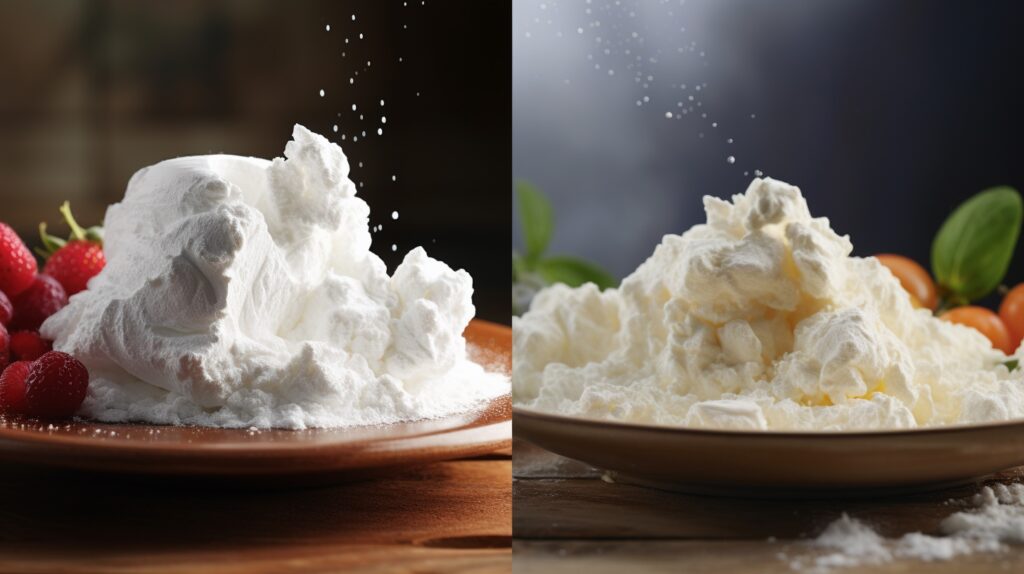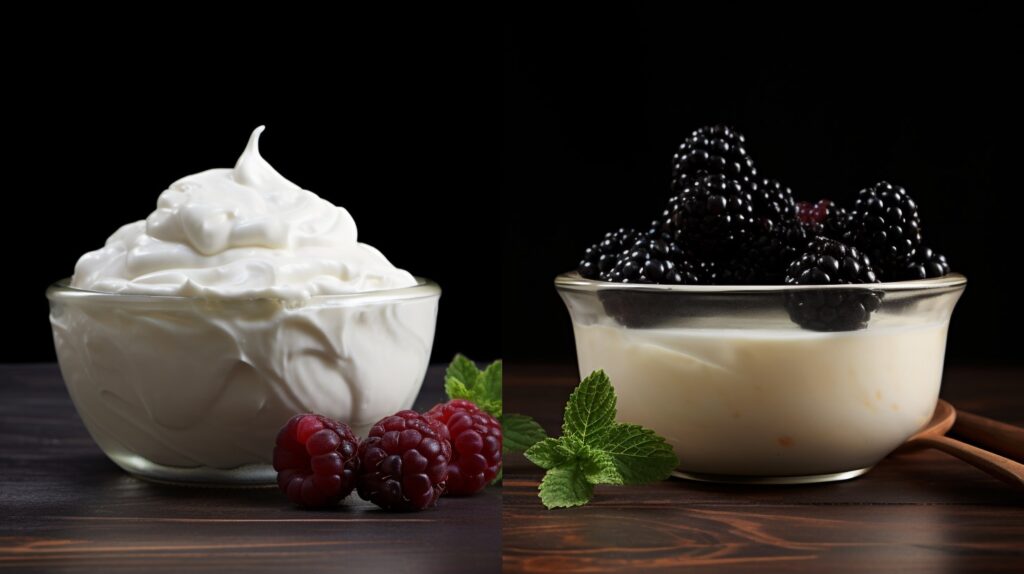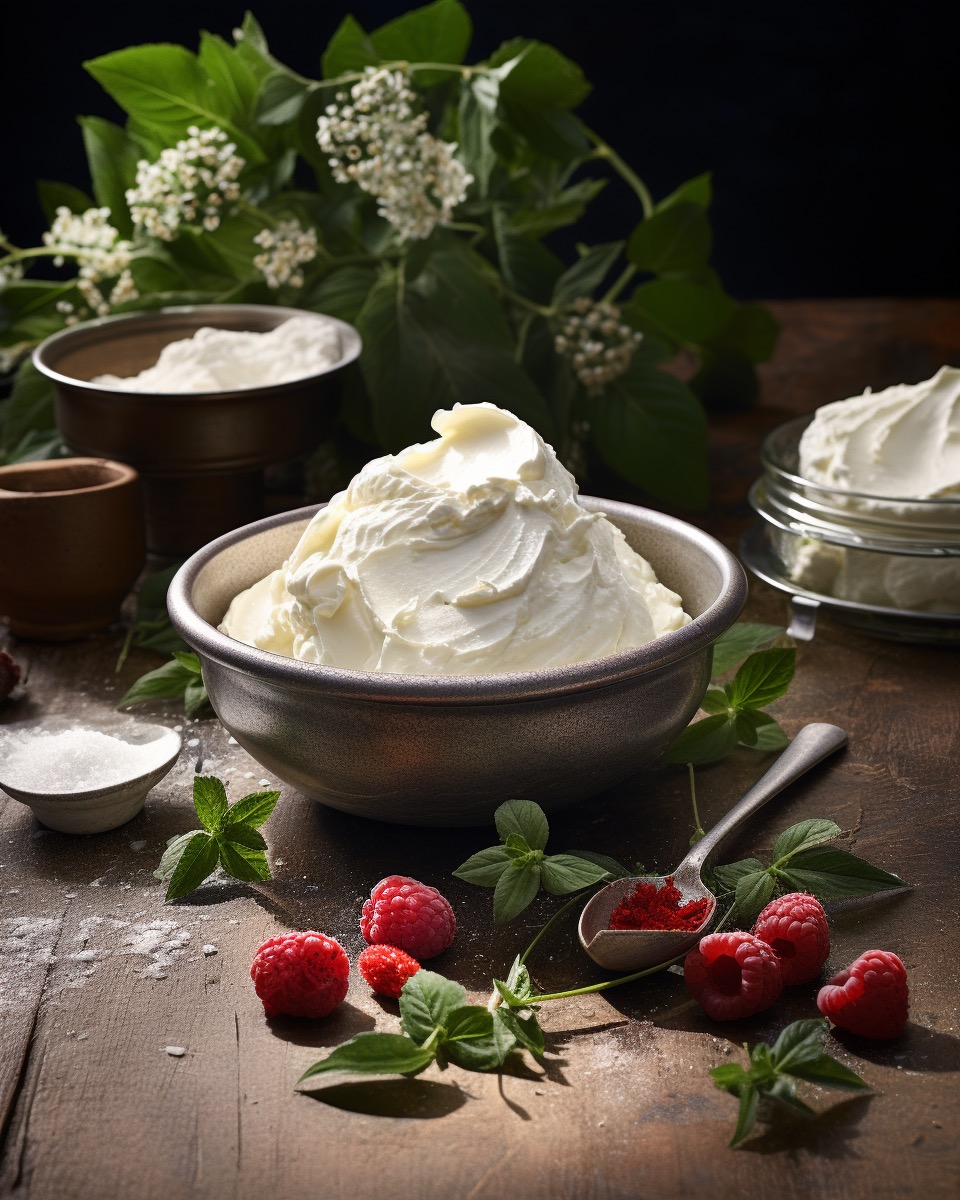The world of cheese is as varied as it is delicious. Cheese can be soft or hard, sweet or savory, and everything in between. Among these many varieties, two that often spark culinary debates are mascarpone and ricotta. Both are Italian in origin and widely used in cooking, but there are key differences that set them apart. In this comprehensive guide, we’ll delve into the world of mascarpone and ricotta, exploring their origins, flavor profiles, nutritional values, and best uses in the kitchen.
What is Mascarpone?
Mascarpone is a thick, creamy cheese originating from the Lombardy region in Northern Italy. Made from only two ingredients – cream and citric or tartaric acid, this cheese is known for its rich, buttery flavor. Mascarpone is a key ingredient in Italian desserts like tiramisu and cheesecake, but its uses extend beyond the sweet. It can also be used in savory dishes, adding a creamy element to pastas, risottos, and sauces.
What is Ricotta?
Ricotta, which literally means “recooked” in Italian, is a fresh cheese made from whey, a by-product of cheese production. It’s lighter than mascarpone, with a grainy texture and slightly sweet, nutty flavor. Ricotta is versatile, working well in both sweet dishes like cannoli or pancakes and savory meals, such as lasagna or stuffed shells.

Main Differences
Origin & Production
The origins and production process of mascarpone and ricotta are significantly different. Mascarpone comes from the Lombardy region in Northern Italy, known for its dairy products. It’s a cream cheese, made by heating cream and curdling it with a small amount of citric or tartaric acid, resulting in a rich, buttery cheese.
On the other hand, ricotta is a by-product of cheese production, created from the whey left over after making other cheeses. This whey is then recooked (giving the cheese its name, as ‘ricotta’ means ‘recooked’ in Italian), and the solids are strained and pressed into cheese, resulting in a lower-fat and higher-protein product than mascarpone.
Texture
The texture of these two cheeses also sets them apart. Mascarpone is silky smooth, with a consistency akin to thick cream or custard. This makes it ideal for folding into whipped cream for desserts, or blending into sauces for a rich, creamy texture.
Conversely, ricotta has a grainier texture, more akin to cottage cheese. It’s creamy, yet retains a lightness that makes it perfect for mixing into pasta fillings, topping pizzas, or folding into pancake or muffin batters for extra moisture and richness.
Flavor
The flavors of mascarpone and ricotta are subtly different, making them suited to different dishes. Mascarpone has a rich, buttery flavor with a slight sweetness. It’s less tangy than most cheeses, making it perfect for sweet applications like tiramisu or cheesecake, though it can also complement savory dishes.
Ricotta, while also slightly sweet, has a more pronounced nutty and tangy flavor profile, which lends itself well to both sweet and savory dishes. It pairs beautifully with fruits and honey in desserts, or with herbs and spices in savory dishes like lasagna or stuffed shells.
Fat Content
When it comes to fat content, mascarpone is significantly higher due to being made primarily from cream. This high fat content gives it a rich, indulgent flavor and texture.
Ricotta, being made from whey, is much lower in fat. This makes it a lighter option, both in terms of flavor and calories, and a healthier choice for those watching their fat intake.
Culinary Uses
While both cheeses are versatile in the kitchen, they have different strengths due to their flavor and texture differences. Mascarpone, with its rich and creamy texture, is often used in desserts such as tiramisu, cheesecakes, and frostings. However, it can also add richness to savory dishes like risottos, soups, and sauces.
Ricotta, with its light texture and slightly sweet flavor, is a popular choice for fillings, particularly in Italian pasta dishes like lasagna, manicotti, and ravioli. Its flavor also pairs well with sweet ingredients, making it a common choice for desserts like cannoli or ricotta pancakes. It can even be used as a topping on toast or bagels, in a similar way to cream cheese.
Flavor & Taste
While both mascarpone and ricotta are subtly sweet, the former’s flavor is rich, creamy and buttery, perfect for decadent desserts. Ricotta is lighter and slightly tangy, with a nutty undertone. It pairs beautifully with fruits, honey, and spices for desserts, but it’s equally at home in savory applications, mixed with herbs and layered in pasta dishes.

Nutrition Comparison
| Nutrient | Mascarpone (per 100g) | Ricotta (per 100g) |
|---|---|---|
| Calories | 429 | 174 |
| Fat | 45g | 13g |
| Protein | 4g | 11g |
| Carbohydrate | 3g | 3g |
| Calcium | 107mg | 207mg |
15 Facts About Differences and Similarities
Mascarpone Originates from Lombardy
Mascarpone hails from the Lomb
ardy region of Italy, famous for its rich dairy products.
Ricotta is Made from Whey
The production of ricotta involves reheating the whey left from cheese-making, hence its name which means ‘recooked’.
Mascarpone is a Star in Tiramisu
This rich, creamy cheese is a key ingredient in the classic Italian dessert Tiramisu.
Ricotta is a Staple in Lasagna
Ricotta is often layered in lasagna and other pasta dishes, contributing a creamy, slightly sweet component.
Mascarpone Contains More Fat
Due to being made from cream, mascarpone has a higher fat content than ricotta.
Ricotta is High in Protein
Being made from whey, ricotta is surprisingly high in protein, making it a great choice for vegetarian diets.
Mascarpone has a Smooth Texture
Mascarpone has a thick, creamy, and smooth texture, making it perfect for spreading or mixing into desserts.
Ricotta Has a Grainy Texture
Ricotta’s texture is soft but grainy, often used in fillings for pastas and desserts.
Both Are Great in Baking
Mascarpone and ricotta can both be used in baking – mascarpone for creamy, rich cakes and ricotta for lighter, airy cakes.
Ricotta Can Be Homemade
It’s relatively easy to make fresh ricotta at home with just milk, vinegar, and a little patience.
Both are Italian Cheeses
Both cheeses originate from Italy and are key components in Italian cooking.
Mascarpone is Excellent in Savory Dishes
While known for its role in desserts, mascarpone can also be used to enrich sauces, risottos, and more.
Ricotta is Versatile
Ricotta works well in a wide variety of dishes, from sweet to savory, demonstrating its versatility.
Mascarpone is Used in Frosting
Mascarpone’s thick, spreadable texture makes it a delicious choice for frosting cakes and cupcakes.
Ricotta is a Healthy Choice
Compared to mascarpone, ricotta is a healthier choice due to its lower fat and higher protein content.

Conclusion
Mascarpone and ricotta, while both being Italian cheeses, each bring unique characteristics to the table – from their origins and production process to their texture, flavor, and culinary uses. Whether you’re looking for a rich, creamy component for a dessert or a light, versatile cheese for both sweet and savory dishes, understanding the differences and similarities between mascarpone and ricotta will help you choose the right cheese for your culinary creation.
